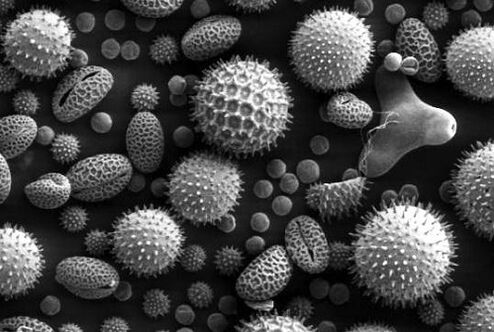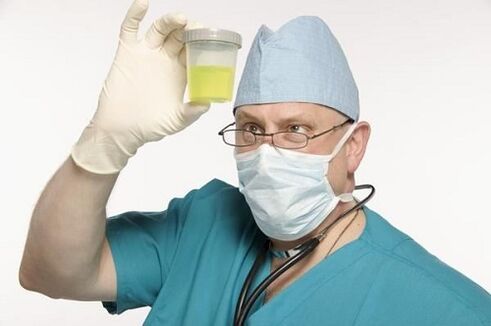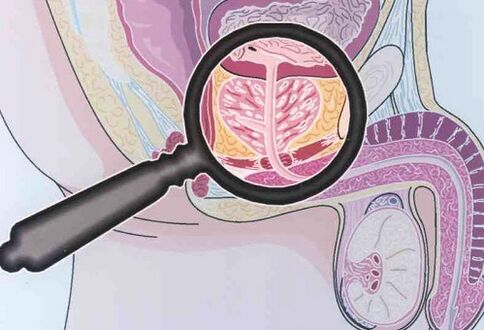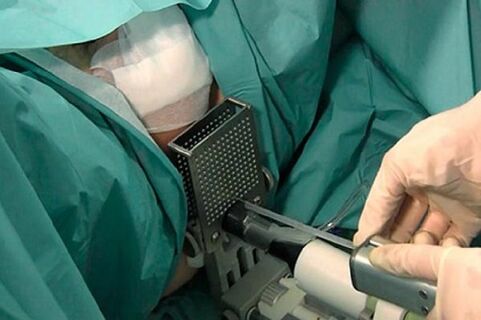In the modern world, prostatitis occurs in almost 50% of the male population. The disease not only brings pain and discomfort, but can also lead to very unpleasant consequences, up to infertility. Therefore, every man should know how prostatitis appears. The health of men and the ability to give birth largely depends on it.

Knowing the signs of prostatitis and periodic examinations by a doctor guarantee timely detection and successful treatment of the disease.
Etiology of the disease
Prostatitis is a urological disease of inflammatory etiology. The disease can be caused by many factors.
The classification of prostatitis depends on what provoked the disease of the prostate gland, how frequent the process is and what character the lesion has.
The following classification criteria are distinguished:
- The look factor is congestive and infectious. In the first case, the problem does not develop because of an infection, but because the venous blood or secretion is stuck in the pelvic organs. The second involves the introduction of pathogenic microorganisms into the prostate gland. There is also prostatitis of mixed origin.
- Damage area. With prostatitis, the gland can be inflamed in different ways. It can be a chronic or acute form of the disease, which, in turn, is divided into types of parenchymal, catarrhal and follicular inflammation. The lesion may be sclerotic in nature or present as an abscess. This category also includes chronic atypical prostatitis, with symptoms that do not correspond to the classic picture of the disease.

Symptoms of the disease also depend on the cause that caused it. The infectious form occurs due to the penetration of pathogenic microorganisms into the prostate through the genital tract or develops against the background of a chronic infection.
Non-infectious prostatitis can be caused by a weakened immune system, hypothermia, a sedentary life, abstinence from sexual intercourse or, conversely, excessive sexual activity. Each case requires a different treatment.

Prolonged lack of sexual intercourse causes stagnation of prostate secretion and the development of congestive prostatitis.
Depending on the diagnosed form, the signs and symptoms of prostatitis may differ from each other. Self-medication is strictly prohibited, since an ignorant person can confuse the manifestation of one disease with another, for example, inflammation of the prostate with spermatitis, vesicle, urethra or benign hyperplasia. Improper treatment can lead to extremely sad consequences.
General symptoms
How does prostatitis appear? If you do not consider a specific type, then the disease can appear with the following characteristic symptoms:
- severe pain, which is localized first in the genitourinary tract, and then spreads throughout the inguinal and abdominal region;
- pain is constantly present in the scrotum and perineum, especially during urination and erection;
- during an erection, the sexual organ cannot reach the size it had previously reached;
- sexual intercourse becomes shorter.

Symptoms can appear all together or separately. If we talk about pain, then its intensity depends mainly on the form and degree of the disease. Unfortunately, many patients in the initial stages do not pay attention to such manifestations, due to which the disease progresses and can develop into chronic prostatitis, which is dangerous for the occurrence of infertility.
If a man began to observe such symptoms in himself, then the risk of prostatitis is high and you should immediately seek qualified help.

Even small manifestations of prostatitis should be the reason for a visit to the doctor.
Symptoms of acute bacterial prostatitis
Bacterial prostatitis is a form of the disease that is caused by an infection. It easily turns into chronic prostatitis, so you should seek help immediately.
Often, acute bacterial prostatitis is a secondary manifestation that accompanies any disease of the pelvic organs and has symptoms similar to it.
Acute bacterial prostatitis can present with the following symptoms:
- increase in body temperature;
- feeling of chills, which is accompanied by tremors in the muscles;
- pain in the prostate area;
- pollakiuria and stranguria;
- the spread of pain in the lumbar region and throughout the perineum;
- problems with urination.

If the patient passes the tests, then the disease can be suspected in the following cases:
- increase in the number of leukocytes in the blood;
- bacterial cells are present in prostate secretion;
- cloudy white urine with a pH above 7. 0.

In the analysis of urine with prostate, characteristic changes will be present.
These are the main signs of acute bacterial prostatitis. If you do not pay attention to them and do not start treatment, then the acute form will soon turn into a chronic one, the signs of which should also be familiar to every man.
Symptoms of chronic bacterial prostatitis
Chronic prostatitis appears as a result of neglecting the treatment of the acute form of the disease and is characterized by periods of exacerbation and remission.
For a man, it can be a revelation that he once had acute prostatitis, was allegedly treated and cured, but after a while the symptoms of the disease (albeit in a suppressed version) returned. In this case, it is worth thinking about the chronic course of the disease.

The lack of pronounced symptoms is dangerous from the late accidental detection of chronic prostatitis in an already advanced form.
Chronic prostatitis does not have clear manifestations, which often leads to serious complications.
However, in such a situation, attention should be paid to:
- burning and cutting (sometimes bordering on excruciating pain) during a trip to the toilet and sexual arousal;
- a constant desire to urinate, at least once an hour, at the end of the process, there is no feeling of complete emptying;
- in the urinary tract there is a burning sensation during and after going to the toilet;
- the jet has a weaker pressure than before - there may even be a break in the flow;
- at night you constantly want to go to the toilet;
- after the end of sexual intercourse, an unpleasant burning sensation remains in the genitals;
- ejaculation occurs quite quickly;
- insomnia and anxiety without cause may be observed.
All these main symptoms of chronic prostatitis are easily confused with sexual disorders. The problem is that few men can admit this to themselves. Therefore, they begin to self-medicate, which will aim to restore sexual strength, which only leads to a complication of the situation.
The cunning of chronic bacterial prostatitis is that it requires constant monitoring, otherwise infertility may result, the diagnosis of which can be made only after the patient undergoes a comprehensive diagnosis.

A complete examination to detect prostatitis necessarily includes an ultrasound examination.
Symptoms of the disease can appear in different ways, and this applies not only to chronic prostatitis, but also to acute bacterial prostatitis.
It is all about the number of bacteria in the body and in the individual body of each patient. As soon as the pathogenic organisms begin to activate and multiply, the person will begin to deteriorate. If the patient, in addition, leads an unhealthy lifestyle (smokes, moves little, consumes alcohol and harmful products), then you should not be surprised that the disease will progress all the time.
Non-bacterial prostatitis and its forms of manifestation
Bacterial prostatitis is also quite common. It would be helpful to know what the symptoms might be in this case. Characteristic of the pathology is the regular appearance of pain, and not only during sexual intercourse or going to the toilet.

Bacterial prostatitis is characterized by the frequent urge to go to the toilet at night and the predominance of urine excreted at night over the volume of the day.
In addition, the following manifestations are associated with non-infectious prostatitis:
- pain in the genitals;
- pain and discomfort in the hip area;
- nocturia and testicular pain;
- decrease in the amount of urine excreted;
- difficulty in starting the urination process;
- pain from the inguinal and perineal region gradually moves to the lumbar region;
- pain in the groin, coccyx and pubis;
- discomfort after defecation.

Psychological discomfort joins physical suffering during illness.
Signs of the disease may be accompanied by psychological disorders. The patient becomes irritable, as he is constantly tormented by pain and discomfort.
If measures are not taken in time, then a man may even fall into a state of depression, and then he will have to seek help not only from a urologist, but also from a psychologist.
It should be noted that atypical prostatitis in its clinical appearance may be similar to a number of other diseases, and asymptomatic prostate disease may not have pronounced manifestations at all. Therefore, it is so important to go to a qualified doctor who will prescribe a series of measures and diagnostic examinations - urine, blood, seminal fluid analysis, ultrasound, if necessary, a biopsy, etc. Only after that the doctor makes the correct diagnosis and prescribes the appropriate treatment.

Most often, a biopsy is performed to rule out a malignant process.
Knowing the symptoms of prostatitis is important for every representative of the strong half of humanity, in order to suggest what kind of disease is bothering him, because the functionality of the entire genitourinary system depends on it. And the sooner a man seeks help, the sooner relief will come to him.























